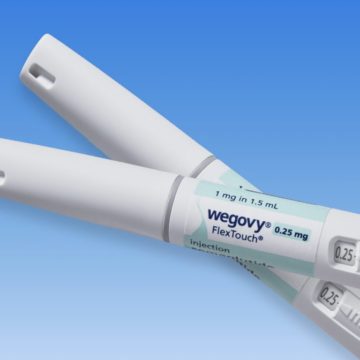If you’ve heard of Ozempic, you may have heard of the term ‘Ozempic face’. It’s a common facial side effect associated with the popular weight loss drug, but what actually is it? What causes it, and can you prevent it? Our MedExpress experts answer these common questions to help you decide whether this treatment is right for you.
How does Ozempic work?
Ozempic contains the active ingredient semaglutide, which belongs to a group of medications known as glucagon-like peptide-1 (GLP-1) receptor agonists. These drugs mimic a natural hormone in your body that helps control blood sugar levels, reduce your appetite and make you feel full. They were originally developed to treat people with type-2 diabetes, but multiple studies show GLP-1s are also effective at promoting weight loss in people who are overweight or obese. [1]
What is ‘Ozempic face’?
Ozempic face is a term for a common side effect of semaglutide and because the drug causes rapid weight loss, it may cause loose skin and an aged appearance around your face. Characteristics of Ozempic face include: reduced skin elasticity, a gaunt appearance and excess skin on the face and neck.

How to avoid Ozempic face
Ozempic helps you lose body fat, and that includes the fat on your face. However, it’s important to note that popular examples of Ozempic face are often exaggerated, and facial changes aren’t just a side effect of weight loss medications. Any significant weight loss — aided by Ozempic, or not — can cause your face to change, and not everyone experiences this in the same way.
There are a few things you can do to keep your skin healthy and potentially lessen the effect of your treatment on your face.
- Stay hydrated — Drink plenty of water to ensure your skin retains its elasticity, which could help it return to its original shape.
- Eat enough calories — Ozempic makes you feel full, so you consume less food, but it’s still important you eat enough to ensure you’re losing weight at a healthy rate. Slowing your rate of weight loss can help reduce facial effects.
- Increase your protein intake — It’s important you eat a protein-rich diet on Ozempic to ensure you don’t lose muscle as well as fat. Maintaining muscle may reduce the prominence of any loose skin.
Remember, you should be aiming for sustainable weight loss, not rapid weight loss. Not only is that healthier for your body, but it will also minimise any major changes to your face.
Is Ozempic face permanent?
Your facial appearance will change as your weight fluctuates. If you stop taking Ozempic, you may regain a lot of the weight you lost, which will give your face a fuller appearance.
If you maintain your weight loss, or continue taking Ozempic, your face will likely stay the same. You may be able to treat any facial volume loss with aesthetic treatments but it’s important you seek advice from a healthcare professional if you’re considering any cosmetic procedures so you can make an informed decision about the most suitable treatment for you.
Other possible Ozempic side effects
Aside from facial side effects, weight loss medications like Ozempic can cause some other symptoms. Here are some of the most common side effects:
- Nausea, vomiting, and diarrhoea, which usually settle as your body adapts to the medication.
- Stomach problems like heartburn and abdominal pain.
- Injection site reactions, such as irritation or redness.
Get in touch with our clinical team if you need support managing any side effects throughout your treatment.
Interested in trying Ozempic?
Ozempic can help boost your weight loss alongside a balanced diet and exercise, helping you reach your weight goals.
At MedExpress we have a variety of GLP-1 weight loss medications which you can learn more about here.
References:
[1] Davies M, Færch L, Jeppesen OK, Pakseresht A, Pedersen SD, Perreault L, et al. Semaglutide 2·4 mg once a week in adults with overweight or obesity, and type 2 diabetes (STEP 2): a randomised, double-blind, double-dummy, placebo-controlled, phase 3 trial. The Lancet [Internet]. 2021 Mar;397(10278):971–84. Available from: https://pubmed.ncbi.nlm.nih.gov/33667417/



